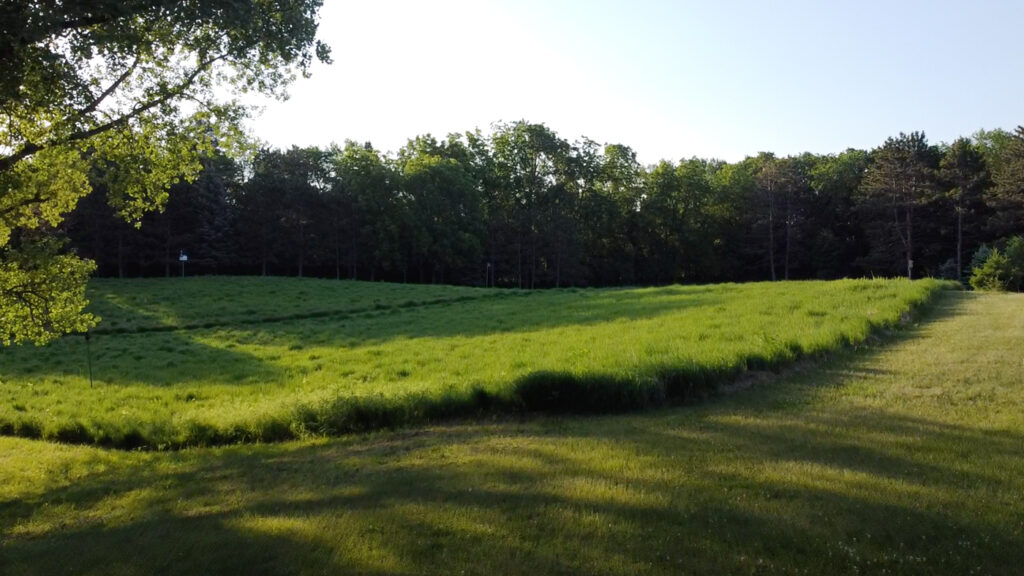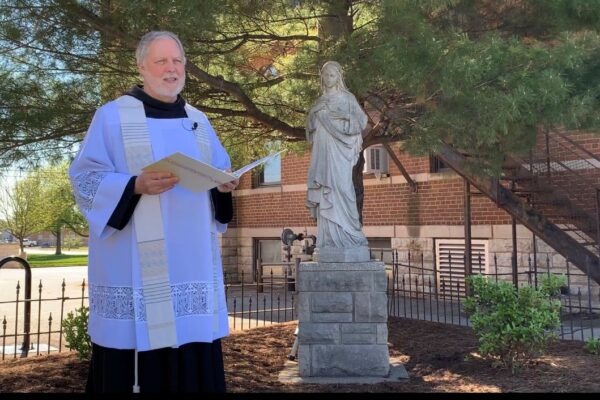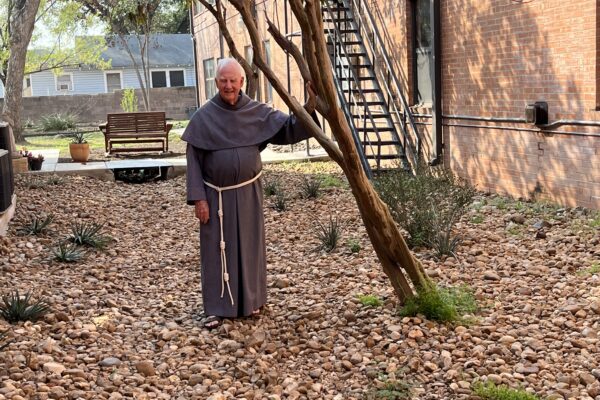
Native Prairie Restoration in Prior Lake
by friar Vince Petersen, OFM Conv.
O Lord, hide me in the shelter of your tall grass prairie
Over the past 25 years, retreatants at the Franciscan Retreat House in Prior Lake, Minnesota, have enjoyed the sanctuary of the tall grasses of restored native prairie areas. Like the trails through the woodlands, the meandering paths through the meadow have served as places of prayer. With some grasses growing over 7 feet tall, many have sought refuge in the shadow of God’s creation.
Funded by a gift from the mother of a friar, approximately 5 acres were taken out of the lawn and dedicated to native prairie grasses and wildflowers. The idea was to replace biologically depleted lawns (which demanded intensive work hours from mowers and the use of fossil fuels) with a more interesting and beautiful landscape. Another goal was to bring our retreatants closer to the natural world where God speaks.
The prairies in Prior Lake are cared for by the retreat center’s friars, staff, and volunteers. Maintenance is minimal. Every two years, the local fire department does a controlled burn in the early Spring. This is done to help maintain the health of the prairie. When not burned, the brush is mowed to help keep down the woody growth of small trees and bushes.
The benefits of restored prairie are many. Imagine a Summer with less mowing and the noise and fumes from mowers that depend on fossil fuels. Then think of the joy that will come to you as you look upon the butterflies and other pollinators while hearing the sound of nesting birds and other small creatures. The beauty of your yard will increase with grasses such as Big Blue Stem, Little Blue Stem, Indian, and Switch grasses, making a great contrast to the more manicured areas of your property. And you will be delighted in the Autumn by the tawny rust colors of the grasses blowing in the wind.
In dedicating a part of your yard to prairie, you are helping to save endangered species of wildflowers and grasses from extinction and the many insects and small animals that depend upon them. The deep roots of prairie grasses work as a reservoir in holding moisture in the soils as well as serving as a carbon dioxide sink by capturing it from the air and storing it deep in the earth.
There is much information available on the web and in your public libraries on the native prairie restoration movement and what you can do to support it. You may also want to access your state’s Department of Natural Resources to see what grasses and forbs (herbaceous broadleaf plants} are appropriate for your area.






